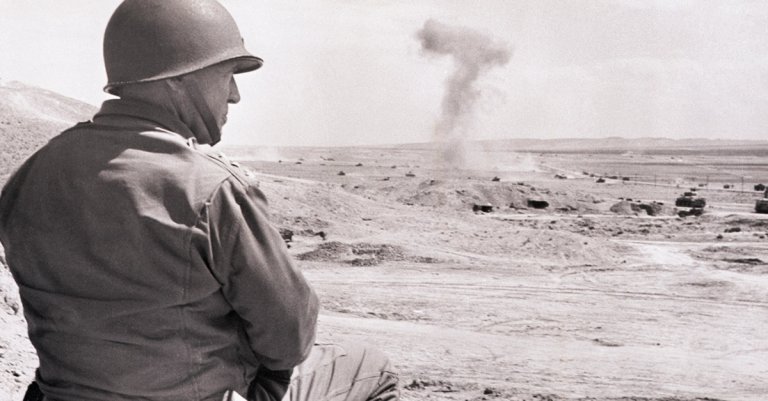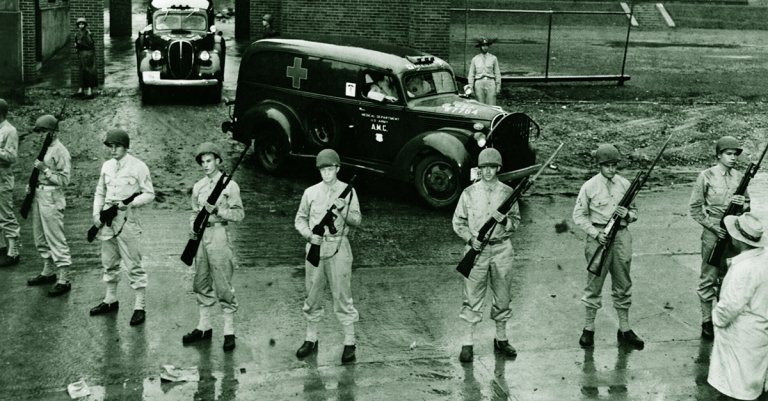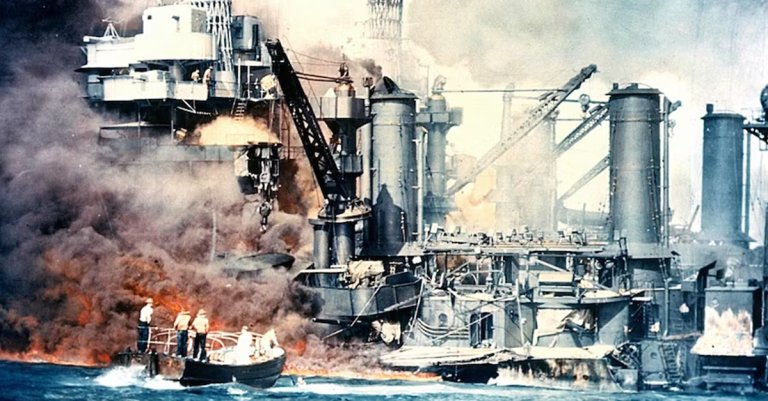

For as long as there have been men sailing the high seas, there have been tales of ghost ships. From legends of the Flying Dutchman appearing near ports during inclement weather to the very real tale of the Mary Celeste, which was found adrift in the Atlantic Ocean in 1872 completely abandoned and in good working order, it can be hard not to be drawn into these tales of mysterious happenings on the great waterways of our planet.
Of course, it makes perfect sense that men and women would occasionally go missing during an era of long and often grueling voyages across the high seas. For all of mankind’s domination of nature, the sea has long been too vast to manage and too treacherous to tame. For much of humanity’s history, traveling across the ocean was always a risky endeavor.
But by the early 1940s, however, sea travel had become significantly less hazardous, and mankind had even managed to find new ways to avoid the ocean’s wrath — like flying high above it in aircraft or hot air balloons. At the time, Americans had largely moved past their fear of the high seas in favor of new concerns about what was lurking within them: German U-boats.

Concerns about encroaching Nazi U-boats near American shores had led to several novel sub-spotting approaches. One was using L-Class rigid airships, also known as blimps, to float above coastal waterways and serve as submarine spotters.
On the morning of August 16, 1942, Lieutenant Ernest Cody and Ensign Charles Adams climbed aboard their L-8 Airship, which was a former Goodyear Blimp that the Navy had purchased a few months before, to deliver equipment to the nearby carrier USS Hornet (CV-8) out at sea. Their mission that day was simple: head out from their launch point on Treasure Island in California to look for signs of U-boats beneath the surf in a 50-mile radius around San Francisco.
A bit more than an hour into their patrol, the two sailors radioed that they had spotted an oil slick on the water and were going to investigate.
“We figured by that time it was a submarine,” said Wesley Frank Lamoureux, a member of the Navy’s Armed Guard Unit who was aboard the cargo ship Albert Gallatin. “From then on, I am not too positive of the actions of the dirigible except that it would come down very close over the water. In fact, it seemed to almost sit on top of the water.”

In Lamoureux’s official statement, he recounted seeing the blimp drop two flares near the slick and then circle the area — which was in keeping with sub-hunting protocols of the day. The nearby Albert Gallatin cargo ship, seeing the blimp’s behavior, sounded their submarine alarms and changed course to escape the area. Unfortunately, these reports would be the last time anyone would see the blimp with the crew onboard.
A few hours later, the former Goodyear Blimp appeared sagging and uncontrolled over the shores of Daly City, California. It drifted over the town until it finally dipped low enough to become snagged on some power lines and come crashing down onto Bellevue Avenue. Crowds quickly formed around the downed blimp, and a number of people ran to the wreckage in hopes of saving the crew… only to find the cabin was completely empty.
The pilot’s parachute and the blimp’s lifeboat were both right where they belonged. The pilot’s cap sat on top of the instrument panel, and the blimp’s payload of two bombs was still secured. A briefcase containing confidential documents that the crew had orders to destroy if they feared capture remained onboard as well.

The L-8’s crew had seemed to vanish without a trace, prompting a slew of differing theories. Some assumed both the pilot and ensign had simply fallen out of the airship, though for such a thing to happen, they would have had to both fall overboard at the same time. If there was something damaged that required both men to address on the external hull of the vessel, there was no evidence to suggest what it could have been in the wreckage.
Another theory suggested the two men lowered their blimp enough to be taken prisoner by the crew of the U-boat or a Japanese vessel in the course of investigating the oil slick. Still, others wondered if the two men may have been entangled in some sort of love triangle that drove one to kill the other and then escape by diving into the sea. Despite a thorough investigation, no conclusion could ever be drawn.
So, what really happened to the two-man crew of the L-8? Did they simply fall out of their blimp and die? Were they captured by Nazis who didn’t bother to check for any classified material on the blimp? To this day, their remains have never been found, and no other details have surfaced. For now, it seems, the legend of the L-8 “ghost ship in the sky” will live on for some time to come.





